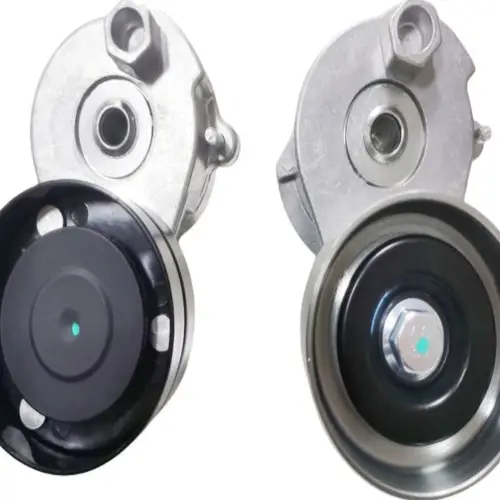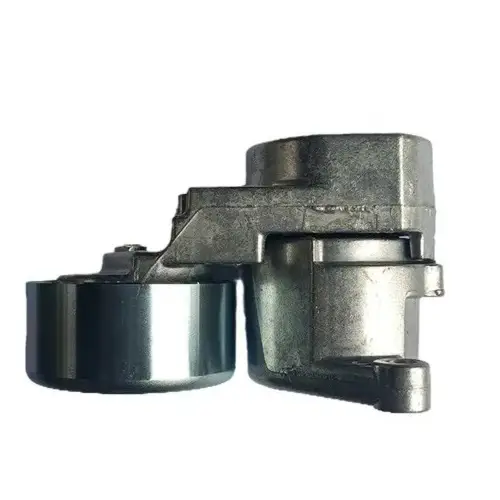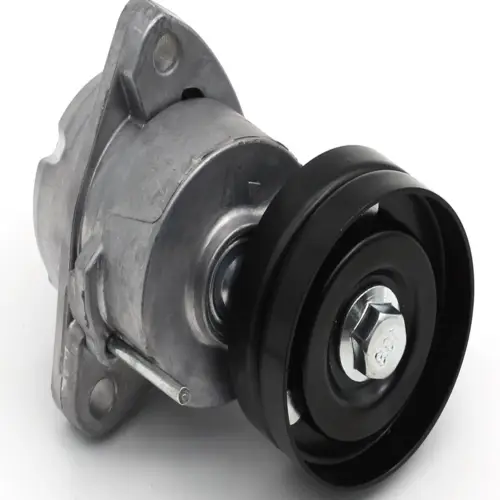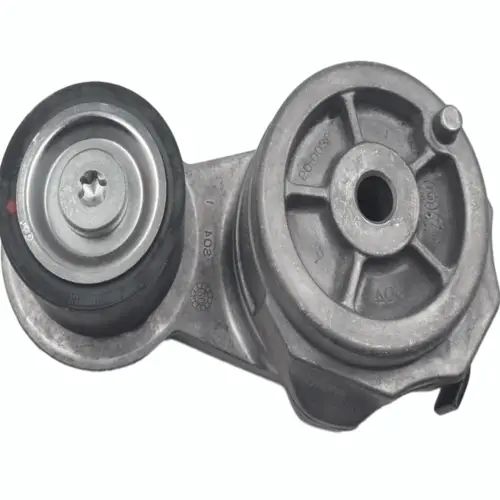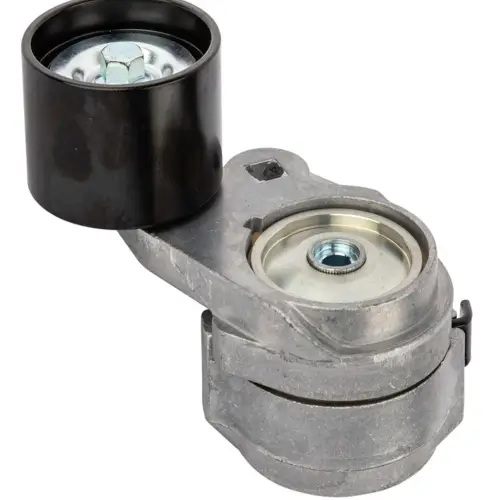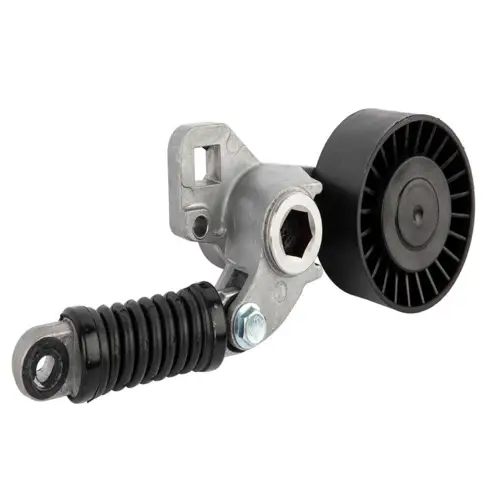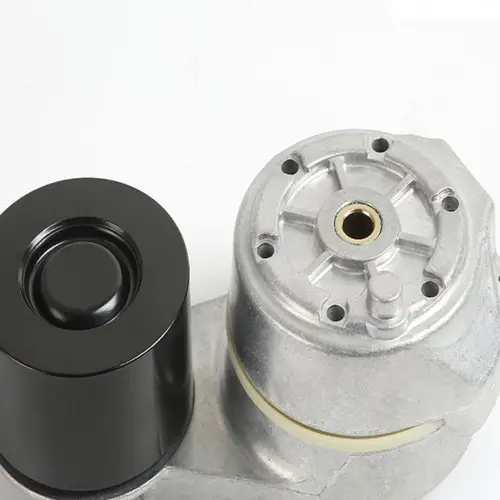
China Hot Selling Truck Engine Parts Belt Tensioner 2117895
Product Description
Introducing our high-quality truck engine parts belt tensioner 2117895, designed specifically for CHINAMFG 345c, 345D, and 349d E345c lowes air compressor. We are a professional manufacturer specializing in belt tensioners for both trucks and passenger cars. Our product boasts the following advantages:
Advantages:
- Reliable and durable, with strict quality control.
- Competitive FOB, CIF, and C&F prices.
- Small minimum order quantity (MOQ).
- Specialized in manufacturing belt tensioners.
- Wholesale options available for auto truck parts.
- Flexible packaging options, including OUCHAI packing, neutral packing, and customer requests.
Shipping options include sea freight, DHL, FedEx, and more. We ensure prompt delivery within 15 days after receiving a 30% deposit.
About Us
Our company, HangZhou OUCHAI TECHNOLOGY CO.,LTD, is a reputable manufacturer located in Kunyang Nailali Industrial Zone, Xihu (West Lake) Dis., HangZhou. With registered capital of RMB 3 million and an area covering 2000 square meters, we have a dedicated team of 30 workers, including 2 engineers and 6 technicians.
We uphold the IATF16949 quality management system and possess advanced production equipment such as CNC lathes, punching machines, die-casting machines, assembly lines, and testing equipment. Our products have gained recognition in European, American, and Southeast Asian markets, earning praise from satisfied customers.
Product Specifications
| Ouchai No. | OEM NO. | Other Ref. | Application | Size |
| OC-CA015 | 2117895 | DAYCO 89439 | CATERPILLAR | 76*46 |
Detailed Photos
Frequently Asked Questions
- Q: Are these belt tensioners compatible with other truck models?
- Q: Can I customize the packaging for my order?
- Q: What is the lead time for delivery?
- Q: Do you offer wholesale prices for bulk orders?
- Q: What is your quality control process?
A: Our belt tensioners are specifically designed for CHINAMFG 345c, 345D, and 349d E345c lowes air compressor. They may not be compatible with other truck models.
A: Yes, we offer flexible packaging options to meet your specific requirements. You can choose between OUCHAI packing, neutral packing, or provide your own customized packaging.
A: After receiving a 30% deposit, we ensure prompt delivery within 15 days.
A: Yes, we provide wholesale options for auto truck parts. Please contact us for more information on bulk pricing.
A: We have strict quality control measures in place to ensure the reliability and durability of our products. Our team adheres to the IATF16949 quality management system, conducting thorough inspections and testing at every stage of production.
At HangZhou OUCHAI TECHNOLOGY CO.,LTD, we not only offer belt tensioners but also a wide range of other industrial products. Our diverse product lineup includes agricultural gearboxes, power output shafts, sprockets, hydraulic couplings, worm gear reducers, racks, roller chains, pulleys, planetary gearboxes, timing pulleys, bushings, and more. We prioritize customer satisfaction and welcome customization based on your drawings and samples. With our high-quality products, competitive prices, and excellent customer service, we strive to be your reliable business partner.
Performance Characteristics of V-Belt Tensioner
V-belt tensioner is a mechanical device that helps to maintain the proper tension of the V-belt. It plays a vital role in the smooth operation and longer service life of machines. Here are the main performance characteristics of V-belt tensioner:
1. Tension Adjustment
The V-belt tensioner can adjust the tension of the V-belt automatically or manually, depending on the type. It prevents the belt from slipping or bouncing, which can cause damage to the machine.
2. Noise Reduction
The V-belt tensioner reduces noise and vibration by keeping the V-belt at the proper tension level. This feature ensures a quieter and smoother operation of the machine.
3. Wear and Tear Reduction
The V-belt tensioner reduces wear and tear of the V-belt and other related components by maintaining the correct tension at all times. This feature increases the life span of the machine and saves maintenance costs.
4. Heat Dissipation
The V-belt tensioner can dissipate heat generated during the operation of the machine by maintaining proper tension. This feature prevents the V-belt from overheating, prolongs the service life of the belt and other machine parts.
Types and Characteristics of V-Belt Tensioner
There are different types of V-belt tensioners, and each has its specific characteristics. The most common types of V-belt tensioner are:
1. Automatic Tensioner
The automatic tensioner adjusts the V-belt tension automatically without human intervention. It is commonly used in modern machines that require precision tension control.
2. Manual Tensioner
The manual tensioner requires human intervention to adjust the V-belt tension. It is commonly used in older machines that do not require precision tension control.
3. Idler Pulley Tensioner
The idler pulley tensioner is a type of automatic tensioner that uses an idler pulley to maintain V-belt tension. It is commonly used in machines that require high accuracy and precision.
4. Spring-Loaded Tensioner
The spring-loaded tensioner is a type of automatic tensioner that uses a spring to maintain V-belt tension. It is commonly used in machines that require frequent tension adjustments.
Advantages of V-Belt Tensioner Made of Different Materials
Different materials used in V-belt tensioner manufacturing have their advantages and disadvantages. Here are some of the common materials used and their benefits:
1. Plastic Tensioner
Plastic tensioners are lightweight, corrosion-resistant, and cost-effective. They are commonly used in machines that are not exposed to extreme temperatures or harsh environments.
2. Aluminum Tensioner
Aluminum tensioners are durable, lightweight, and resistant to corrosion. They are commonly used in machines that require high precision and accuracy.
3. Steel Tensioner
Steel tensioners are strong, durable, and resistant to wear and tear. They are commonly used in heavy-duty machines that operate in harsh environments.
Application of V-Belt Tensioner in Various Fields
V-belt tensioner is widely used in various fields, including:
1. Automotive Industry
V-belt tensioner is commonly used in the automotive industry to maintain the proper tension of the V-belt in engines, transmissions, and other related components.
2. Industrial Machinery
V-belt tensioner is commonly used in industrial machinery such as pumps, compressors, and generators to maintain the proper tension of the V-belt.
3. Agricultural Equipment
V-belt tensioner is commonly used in agricultural equipment such as tractors and harvesters to maintain the proper tension of the V-belt.
4. HVAC Systems
V-belt tensioner is commonly used in HVAC systems such as air conditioners and heaters to maintain the proper tension of the V-belt.
5. Power Generation
V-belt tensioner is commonly used in power generation equipment such as turbines and generators to maintain the proper tension of the V-belt.

Future Development Trends and Opportunities of V-Belt Tensioner Products
The V-belt tensioner market is expected to grow in the coming years due to the increasing demand for efficient and reliable machines. The following are some of the future development trends and opportunities for V-belt tensioner products:
1. Lightweight Tensioners
There is a growing demand for lightweight V-belt tensioners that can increase machine efficiency and reduce fuel consumption.
2. Smart Tensioners
The development of smart V-belt tensioners that can adjust tension automatically based on the machine’s operating conditions is expected to increase.
3. 3D Printing Technology
The use of 3D printing technology in V-belt tensioner manufacturing is expected to increase due to its cost-effectiveness and design flexibility.
How to Choose a Suitable V-Belt Tensioner
Choosing a suitable V-belt tensioner requires careful consideration of several factors. Here are some aspects to analyze:
1. Application Type
The application type determines the type of V-belt tensioner required. For example, machines that require high precision and accuracy require automatic tensioners.
2. Belt Size and Type
The size and type of V-belt used in the machine determine the type of V-belt tensioner required. For example, machines that use wider V-belts require tensioners with larger pulleys.
3. Load and Torque Requirements
The load and torque requirements of the machine determine the type of V-belt tensioner required. For example, machines that operate under heavy loads require tensioners with stronger springs.
4. Tensioning Mechanism
The tensioning mechanism of the V-belt tensioner determines the ease of tension adjustments and the level of precision required.
5. Speed and Operational Conditions
The speed and operational conditions of the machine determine the type of V-belt tensioner required. For example, machines that operate at high speeds require tensioners that can withstand high temperatures.
Summary
V-belt tensioner is a critical component in maintaining the proper tension of the V-belt, increasing machine efficiency and prolonging the service life of the machine. Choosing the right type of V-belt tensioner requires careful consideration of several factors, including application type, belt size and type, load and torque requirements, tensioning mechanism, and speed and operational conditions. With the development of innovative technologies such as lightweight tensioners, smart tensioners, and 3D printing, the future of V-belt tensioner products is bright and promising.
Author: Dream

